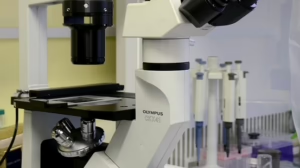The Power of Regeneration: Exploring the Secrets of Human Healing
Human beings possess an astonishing ability to heal. From the rapid repair of a cut or scrape to the intricate processes that allow for recovery from illness, the body’s regenerative capabilities are remarkable. This article delves into the science of human healing, exploring the mechanisms behind regeneration, its implications for medicine, and the potential future of regenerative therapies.
The Biology of Healing
1. Cellular Regeneration
At the core of human healing lies the phenomenon of cellular regeneration. When tissues are damaged, specialized cells, known as stem cells, are activated. These cells have the unique capacity to divide and differentiate into various types of cells needed for repair. For example:
- Skin Repair: Keratinocytes, the primary cells in the outer layer of skin, quickly divide and migrate to close wounds.
- Blood Formation: Hematopoietic stem cells in the bone marrow continuously produce red and white blood cells, crucial for recovery from injury and infection.
2. Inflammation and Healing
An essential part of the healing process is inflammation. When an injury occurs, the body initiates an inflammatory response that serves several purposes:
- Isolation of the Injury: Inflammation helps prevent the spread of pathogens.
- Recruitment of Repair Cells: Immune cells and growth factors are sent to the site to initiate healing.
- Tissue Cleanup: Dead cells and debris are removed, paving the way for new cell growth.
While inflammation is vital for healing, excessive or chronic inflammation can lead to complications, highlighting the importance of balancing this response.
The Role of Genetics and Environment
1. Genetic Factors
Genetics plays a pivotal role in individual healing capacities. Certain genes are associated with enhanced healing processes, influencing everything from how quickly wounds close to how effectively the immune system responds to infections. Understanding these genetic elements can help develop tailored approaches to healing.
2. Environmental Influences
Lifestyle factors, such as nutrition, exercise, and stress management, significantly affect healing. Nutrients like vitamins A and C, zinc, and proteins are crucial for tissue repair. Regular physical activity enhances circulation, promoting faster healing, while chronic stress can impede recovery by affecting immune function.
The Future of Regenerative Medicine
The understanding of human regeneration is propelling advancements in regenerative medicine, offering new hope for treating chronic diseases, injuries, and even degenerative conditions. Key areas of exploration include:
1. Stem Cell Therapy
Harnessing the power of stem cells, researchers are developing therapies aimed at repairing damaged tissues and organs. For instance, stem cell injections are being explored for treating heart disease, spinal cord injuries, and degenerative joint diseases.
2. Tissue Engineering
Combining living cells with biomaterials, tissue engineering aims to create functioning tissues that can replace damaged ones. This innovation holds promise for organ transplantation, and significant strides are being made in creating lab-grown organs that may one day alleviate shortages.
3. Gene Editing
Techniques such as CRISPR-Cas9 are revolutionizing our approach to genetic disorders. By correcting genetic defects at the source, gene editing presents the possibility of curing conditions that were previously deemed untreatable.
Conclusion
The power of human healing is a testament to the body’s inherent wisdom and capability for restoration. As researchers continue to unlock the secrets behind regeneration, the future of medicine appears increasingly promising. By harnessing the natural healing processes inherent in our biology, we stand on the brink of a new era in healthcare, one that prioritizes regeneration and repair over mere symptom management. The potential to revolutionize treatment and improve quality of life is real, making the exploration of human healing an exciting frontier for both scientific inquiry and the patient experience.


























Add Comment